Today I came with my eagle-eyed buddy Kirsten who noticed the presence of a docent from the San Francisco Parks Trust, ready to give free guided tours of the Tea Garden to anyone who's interested.
The Parks Trust gives numerous free tours throughout Golden Gate Park. They have one tour just of park statuary that I thought would be interesting, and two different tours of the west half of the Park which is much less familiar to me than the east half. (Mark it all down on the long list things that I want to do before I die but might not get to.)
The tour was excellent. The guide, Ted, had a lot to say--not just about the history of Golden Gate Park and the Tea Garden itself--but about different tea gardens, the plants maintained inside them, Asian gardening traditions, and garden design.
So, then. Onward.
The cherries have been blooming for a few weeks. They're just about done.
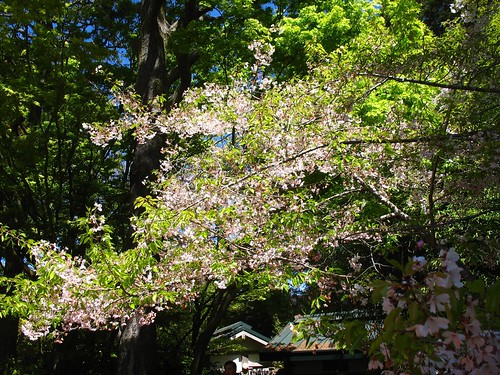
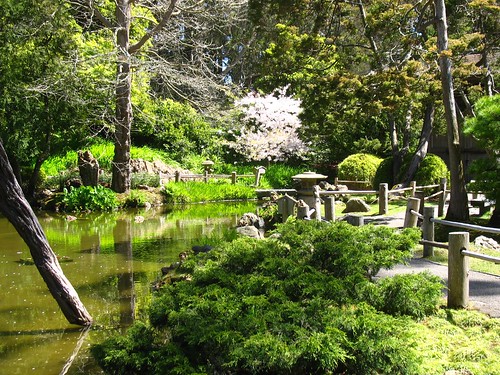
Lots of red in this garden--apparently not a big part of traditional tea gardens which emphasize subtler colors more conducive to contemplation. Ted said to think of this as a an Asian Tea Garden, because Chinese influences are key throughout.

A lot of red comes from Pieris japonica this time of year. Do you like it?
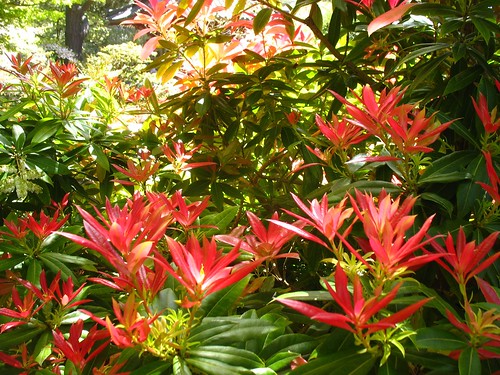
It's not for me, but when I recently came across the variety 'Amamiana' with its enormous panicles I bought it for my client's garden without a moment's hesitation.
Maples and azaleas provide more reds.
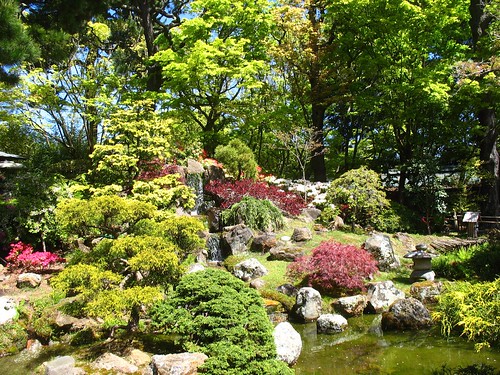
I was intrigued to learn that there is only one genetically dwarfed plant in the Tea Garden; all the others are dwarfed by a gardener's hand.
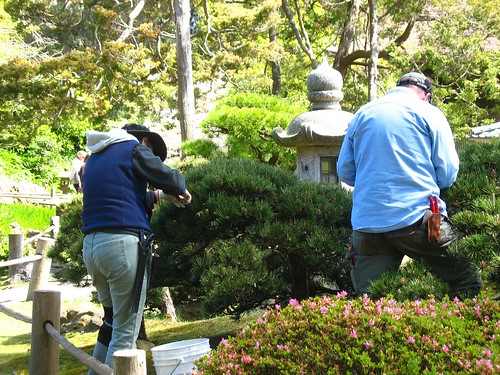
Spring is a busy time of year for the hands of gardeners.
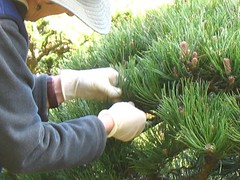
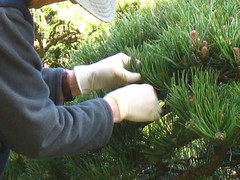
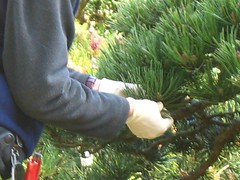
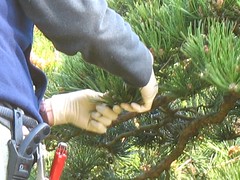
And this conifer is the oldest tree in San Francisco! Planted only fifty-something years ago, but over 200-years-old when it was planted!
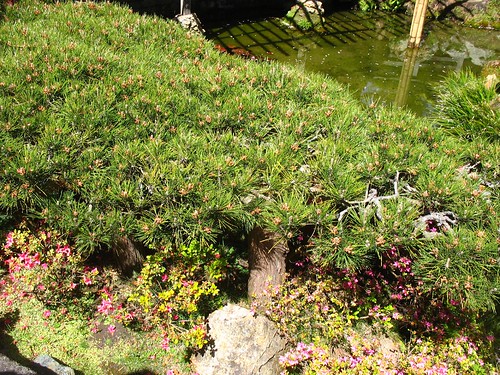
Another interesting Tea Garden plant factoid: this Ginkgo biloba (tall, dormant) changed sex a few years ago. It's a female now.
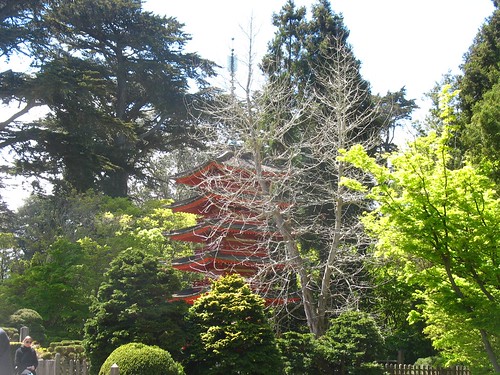
And after I thought about it, I remembered my plant I.D. teacher told us that in class the night we discussed the Ginkgoaceae.
And apparently noone has been able to identify this tree. If you know what it is, call the Tea Garden.
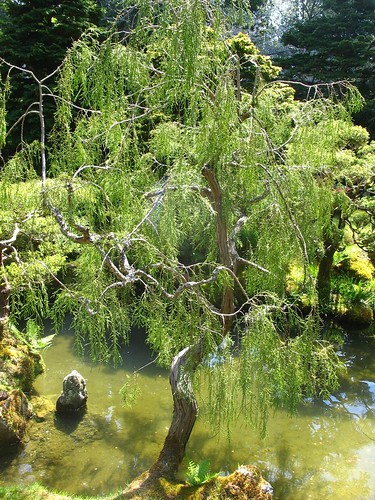
Anyway, that's it for interesting facts I want to share right now. If you're going to be in San Francisco on April 21, that evening's Cal Hort program features the Tea Garden:
"History of the Japanese Tea Garden" with garden tour by one of the members/great grandson of the creator of the garden Makoto Hagiwara. Erik S. Hagiwara-Nagata will give a guided tour and lecture on the history of the Japanese Tea Garden, in Golden Gate park--the oldest Japanese style garden built in the USA. There will be featured photographs from the family album of the pre WWII Tea Garden while the family resided there and a personal talk highlighting the garden's history and changes up to present. One topic of the lecture is the introduction of the Fortune Cookie, which was originated and introduced there.But for now, a few more pictures:
Acer palmatum.
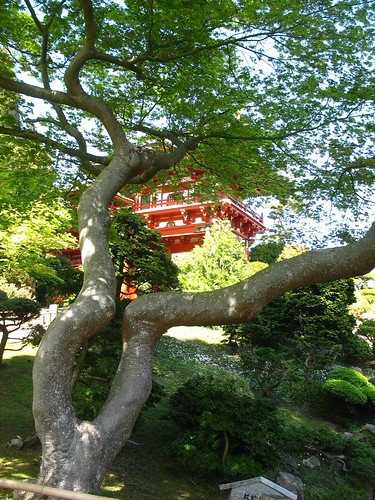
Thujopsis dolabrata.
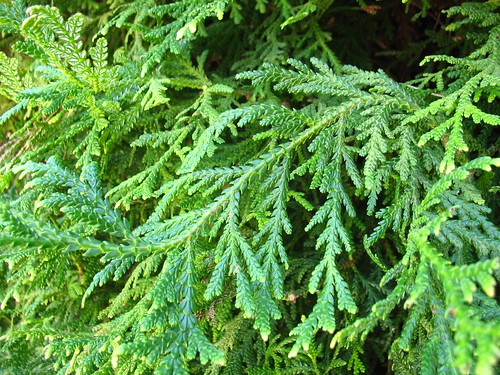
Mount Fuji, in boxwood.
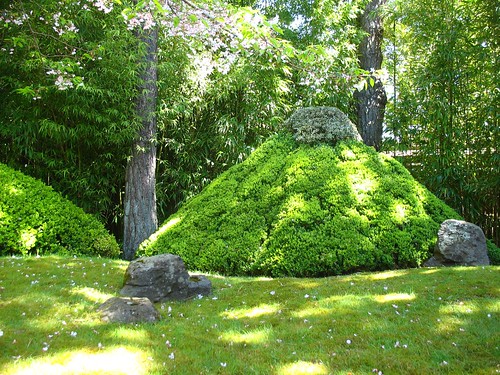
Goths!
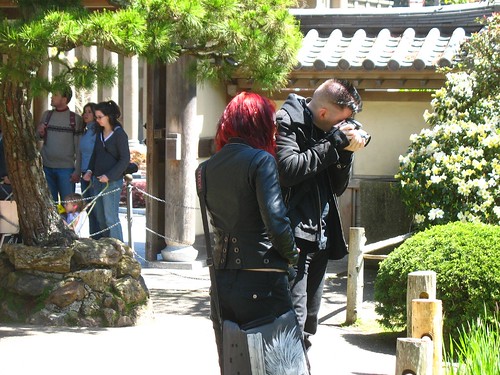


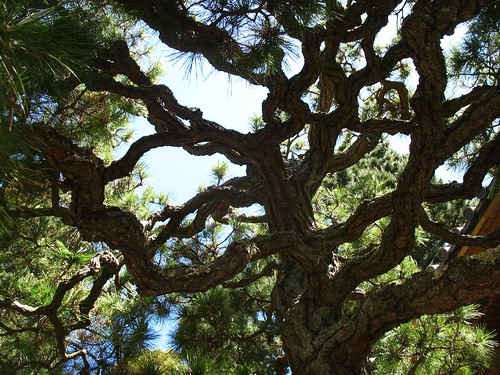

Afterwards, we splurged on the $8.50 tea service.
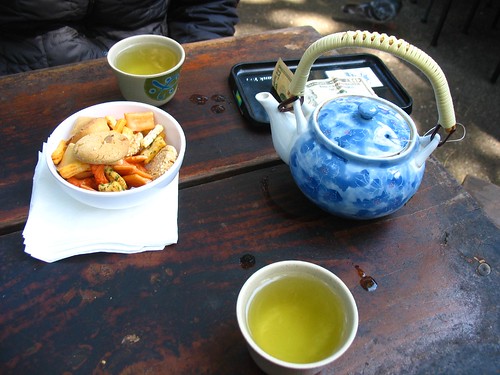
I got a nice fortune.

And so did Kirsten!


7 comments:
HA to identical fortunes! Your unnamed tree is exquisitely formed, must be a salix with its feet in the water? So many wonderful tree limbs there, and I especially loved the goths, that look appeals to me even though I may have surpassed the age limit for it. My hair kind of looks like the red head, though. ;->
Do you think the identical fortunes cancel each other out? Salix can be very variable; that's a good idea. I find it hard to believe there is a tree in this very visited, high profile garden that noone has been able to identify! It does not compute. I like the goths too. I think it's a good look.
The red-haired goth girl sort of goes with the Pieris and Japanese maples, doesn't she?
Thank you for the tour of the Asian Tea Garden, kind-hearted and well-liked Chuck...the Mount Fuji in boxwood is mindboggling.
Annie at the Transplantable Rose
Japanese or Asian style gardens have a definate appeal. I have all the elements to make one, too much work though, all the pruning, shaping and fussing. I'll do like Annie in her garden and have a Japanese vignette.
As a matter of fact I will be in San Francisco on April 21, though not in the evening...
Really?!
Love the Asian style gardens always...never seen one I didn't like actually. I'm with you on the Pieris japonica...the red is nice but 'Amamiana' is outta sight!
Post a Comment